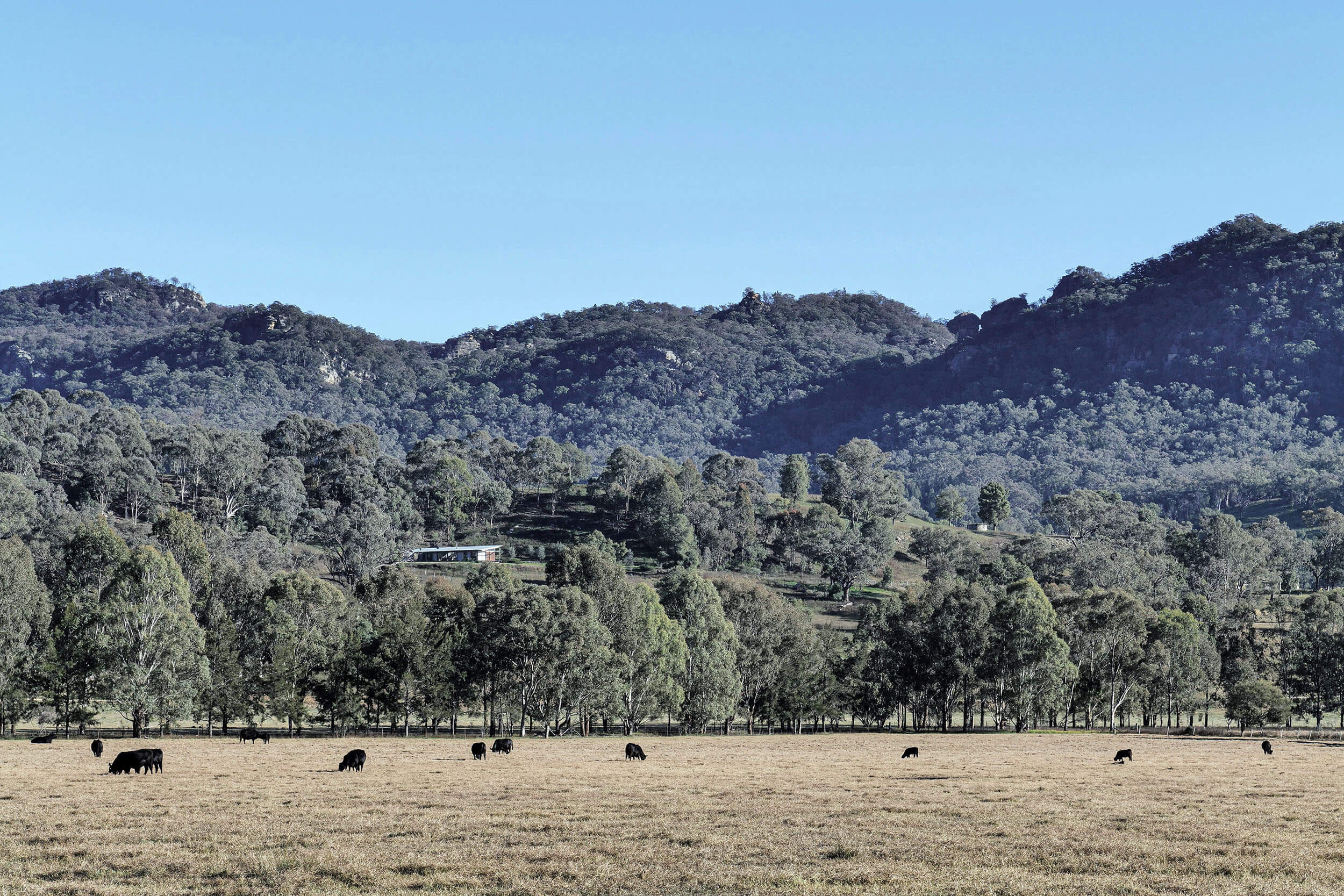

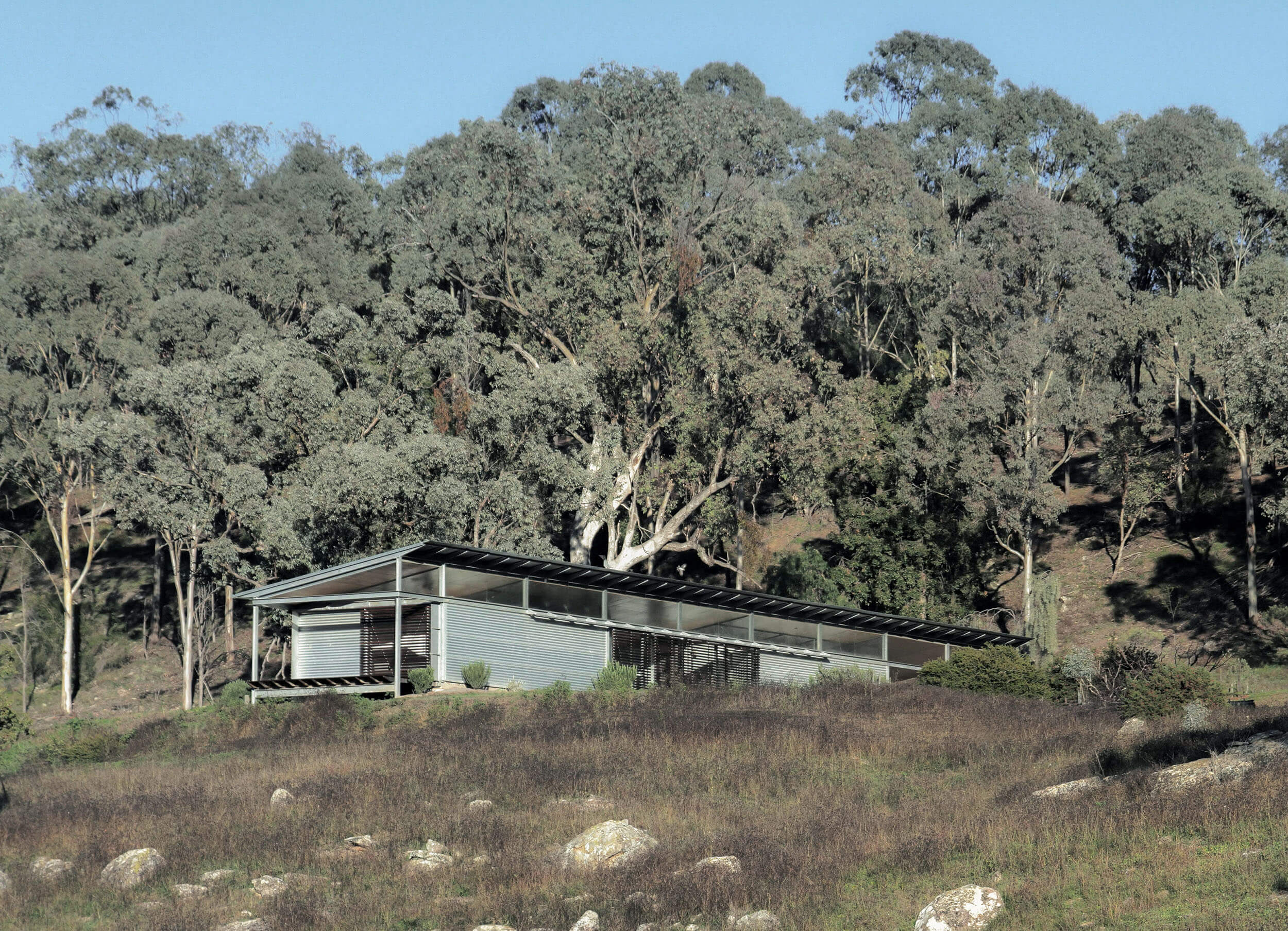
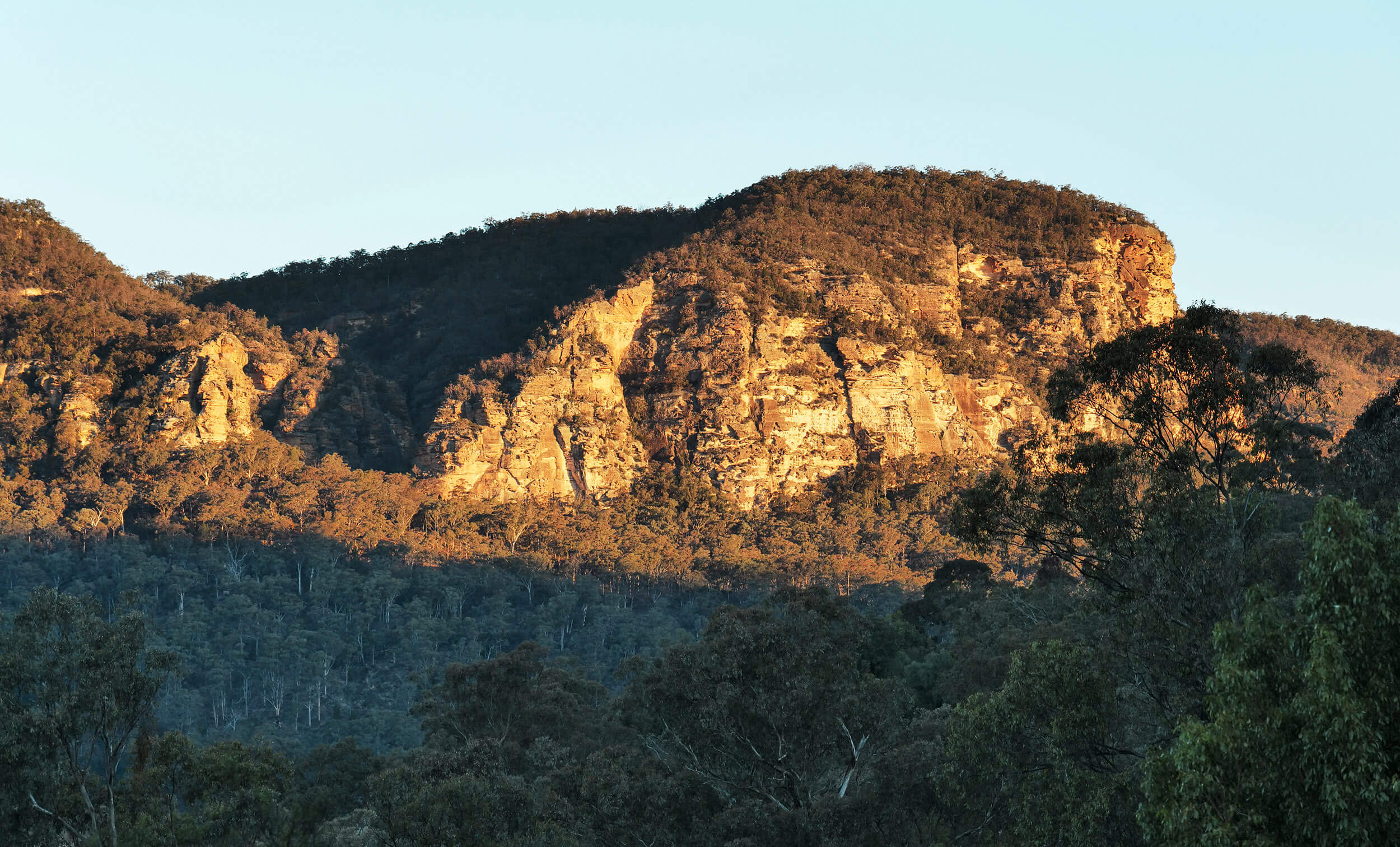
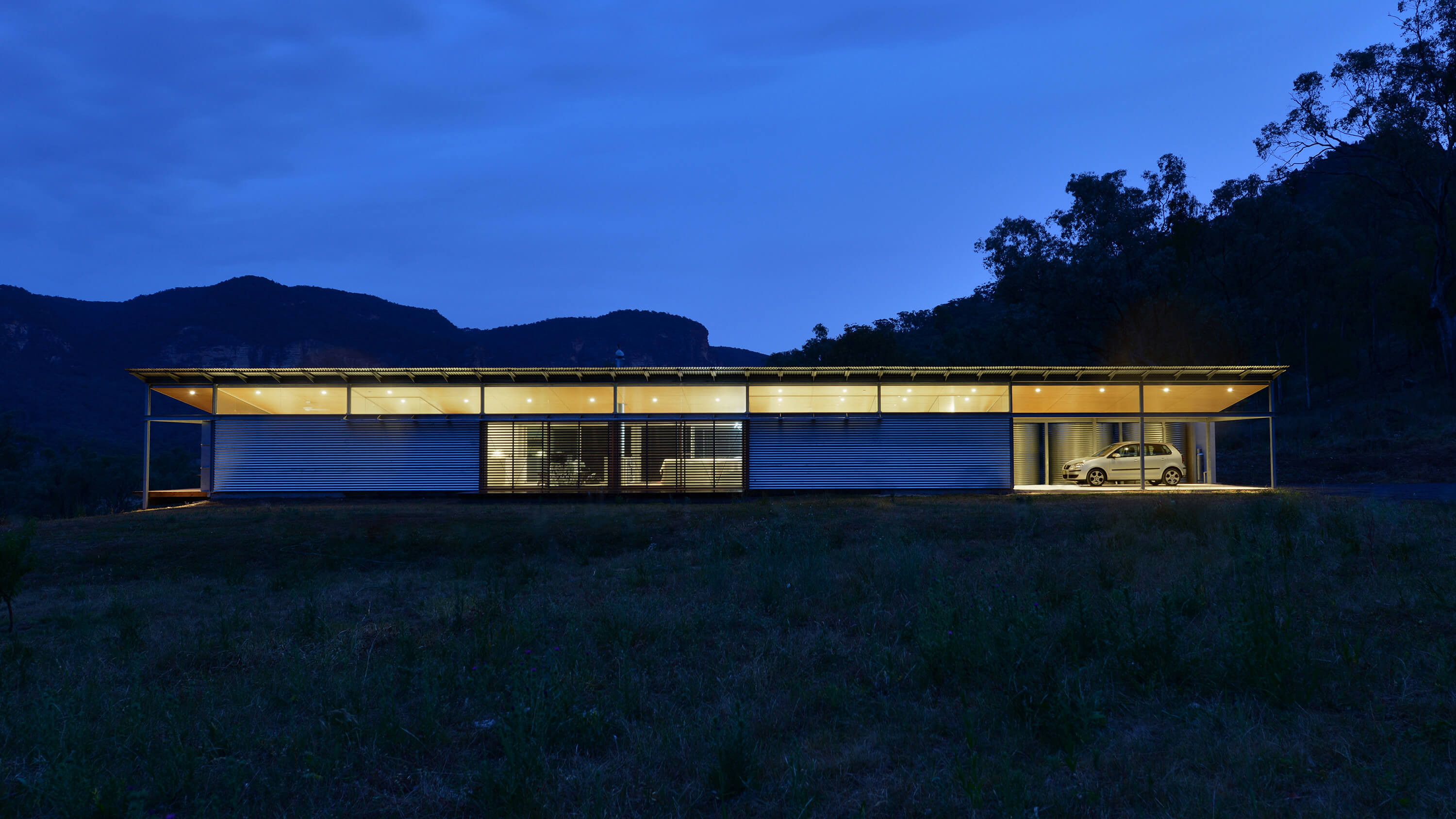
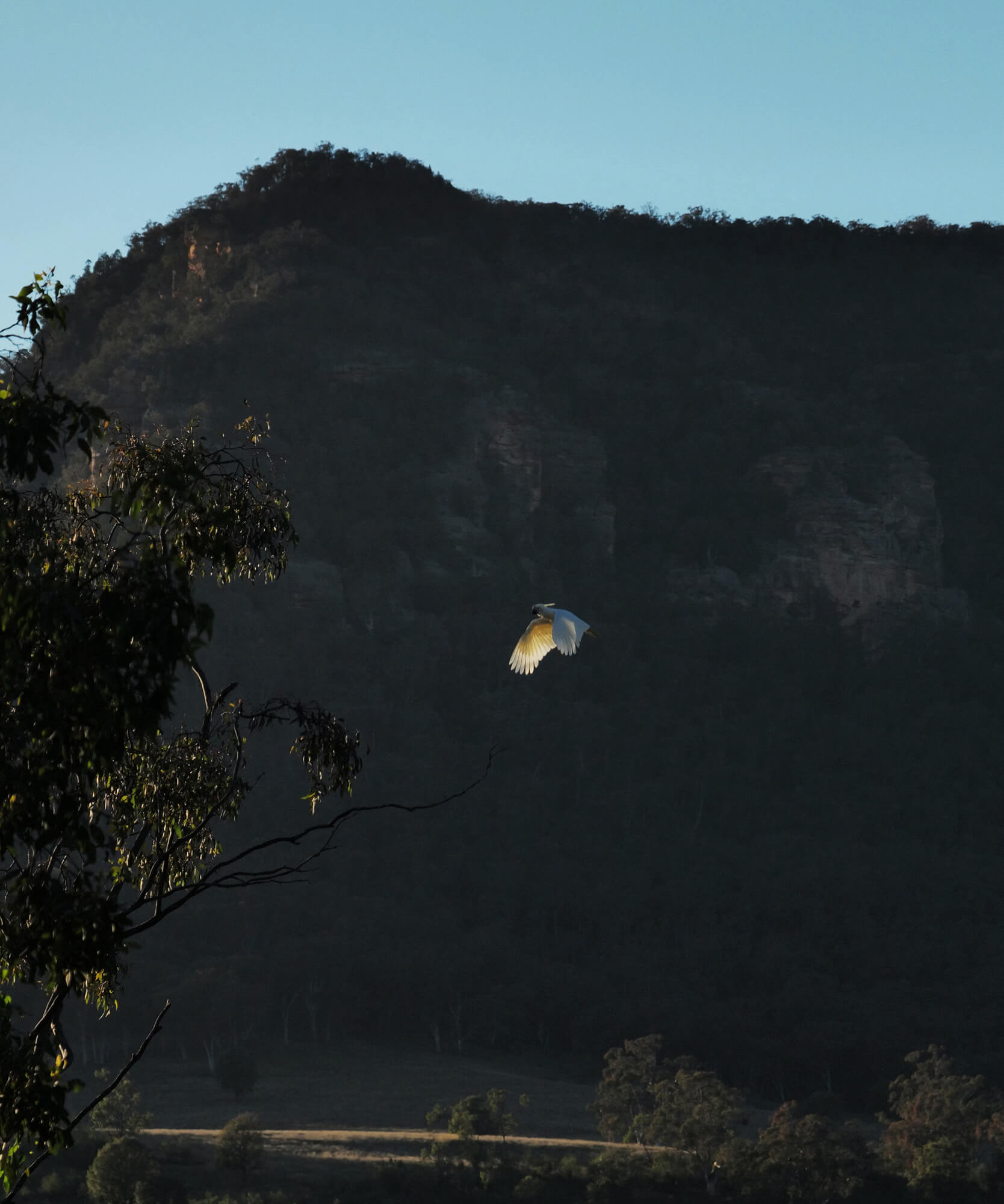
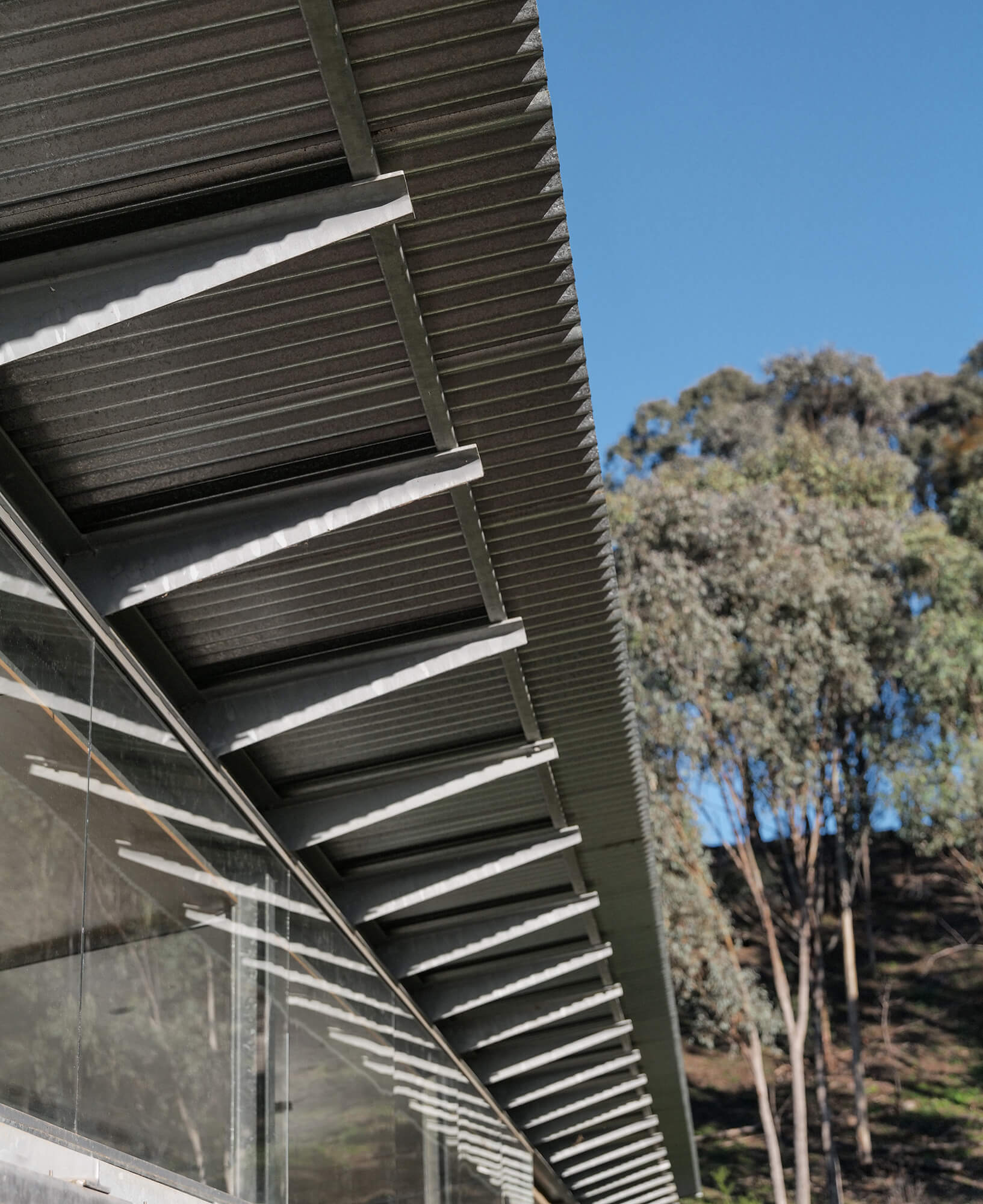
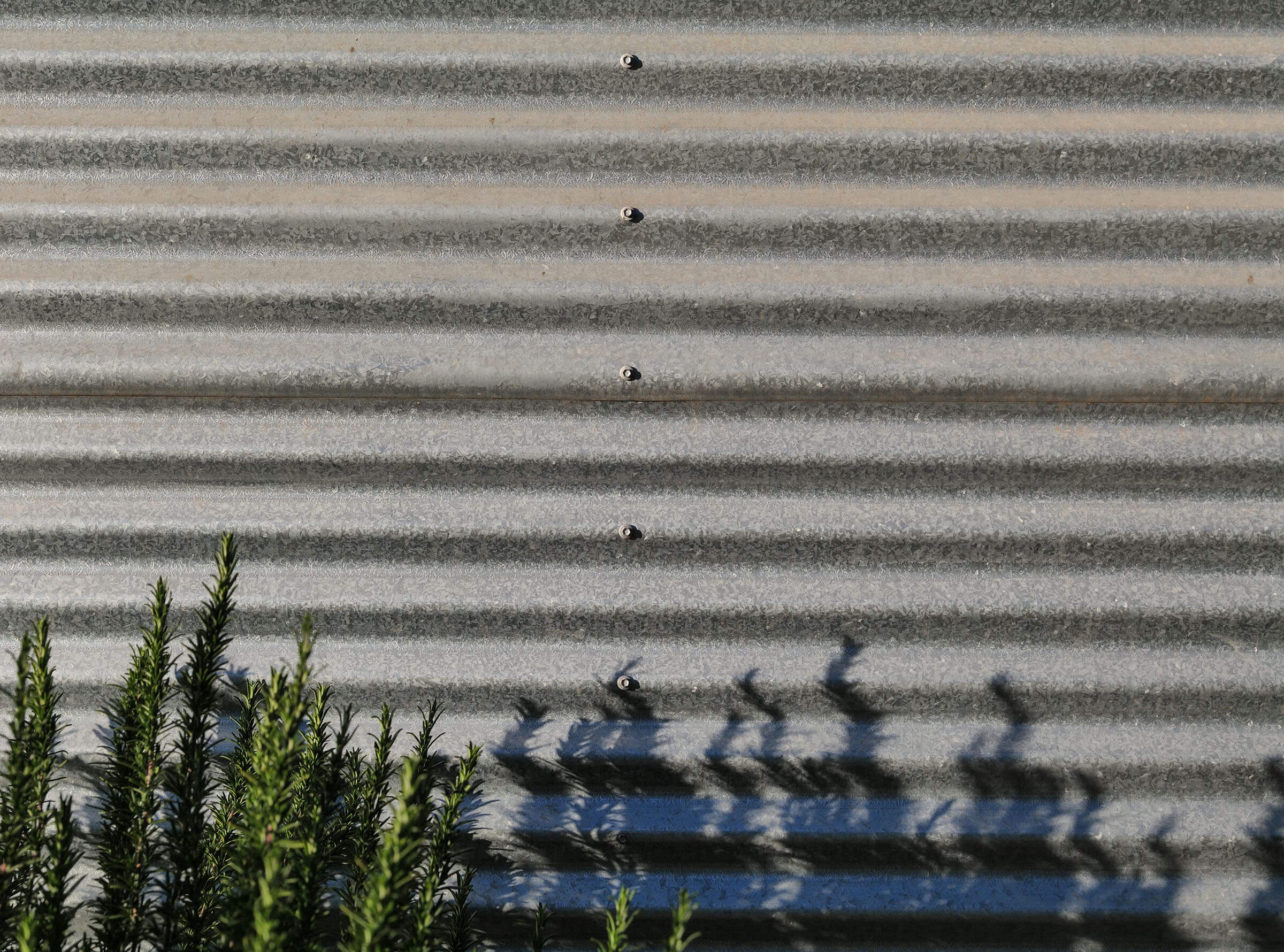
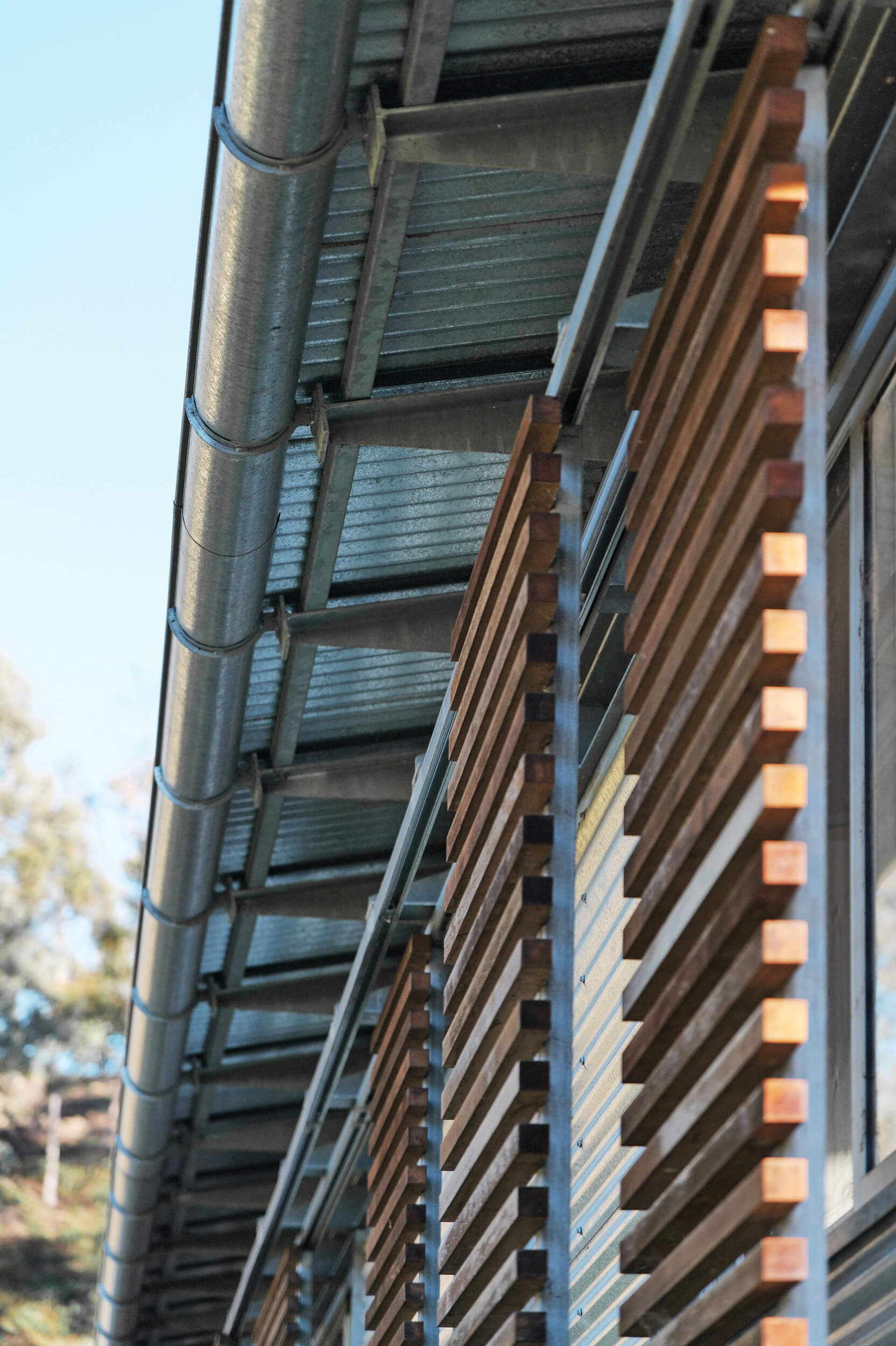
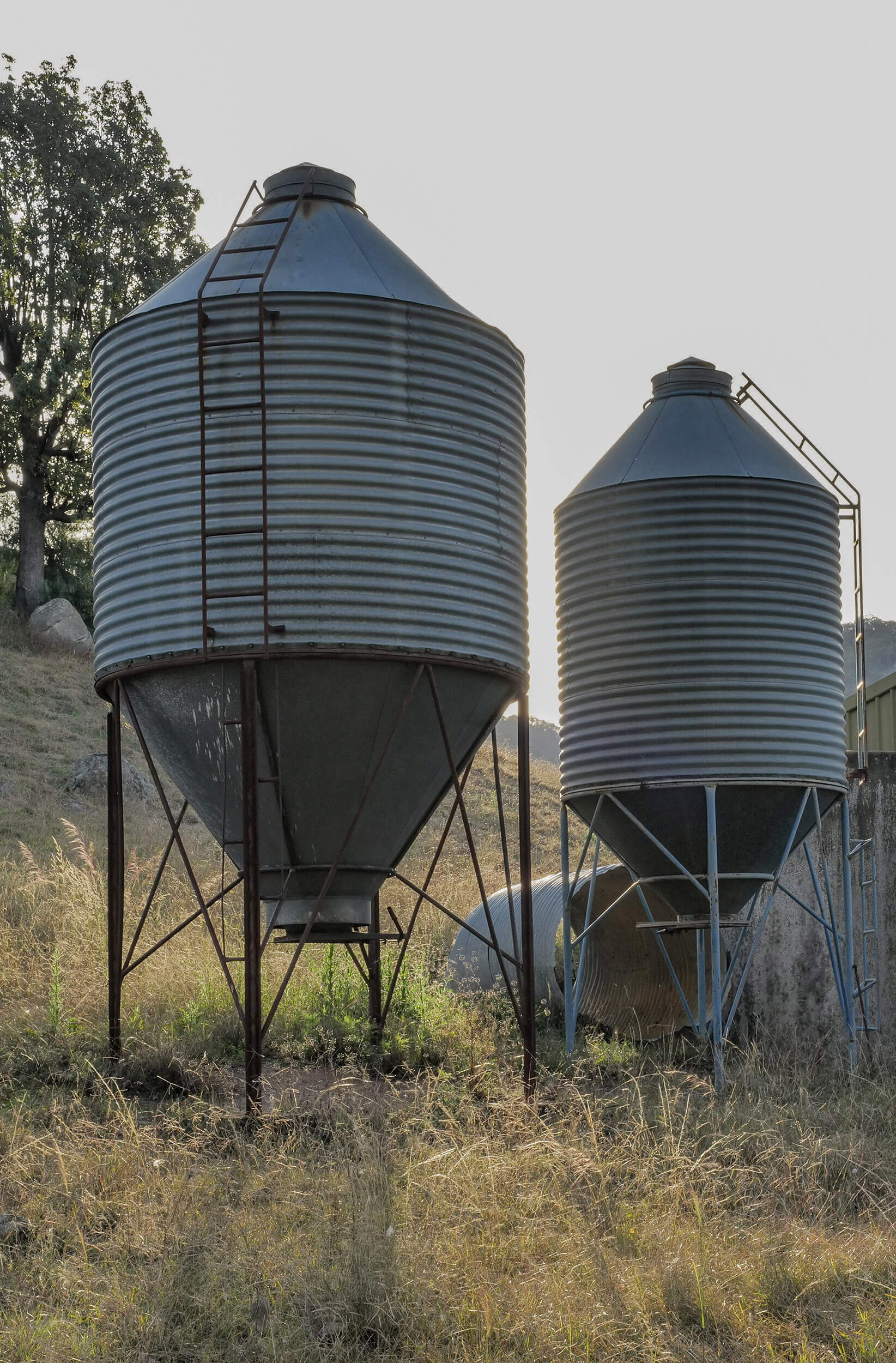
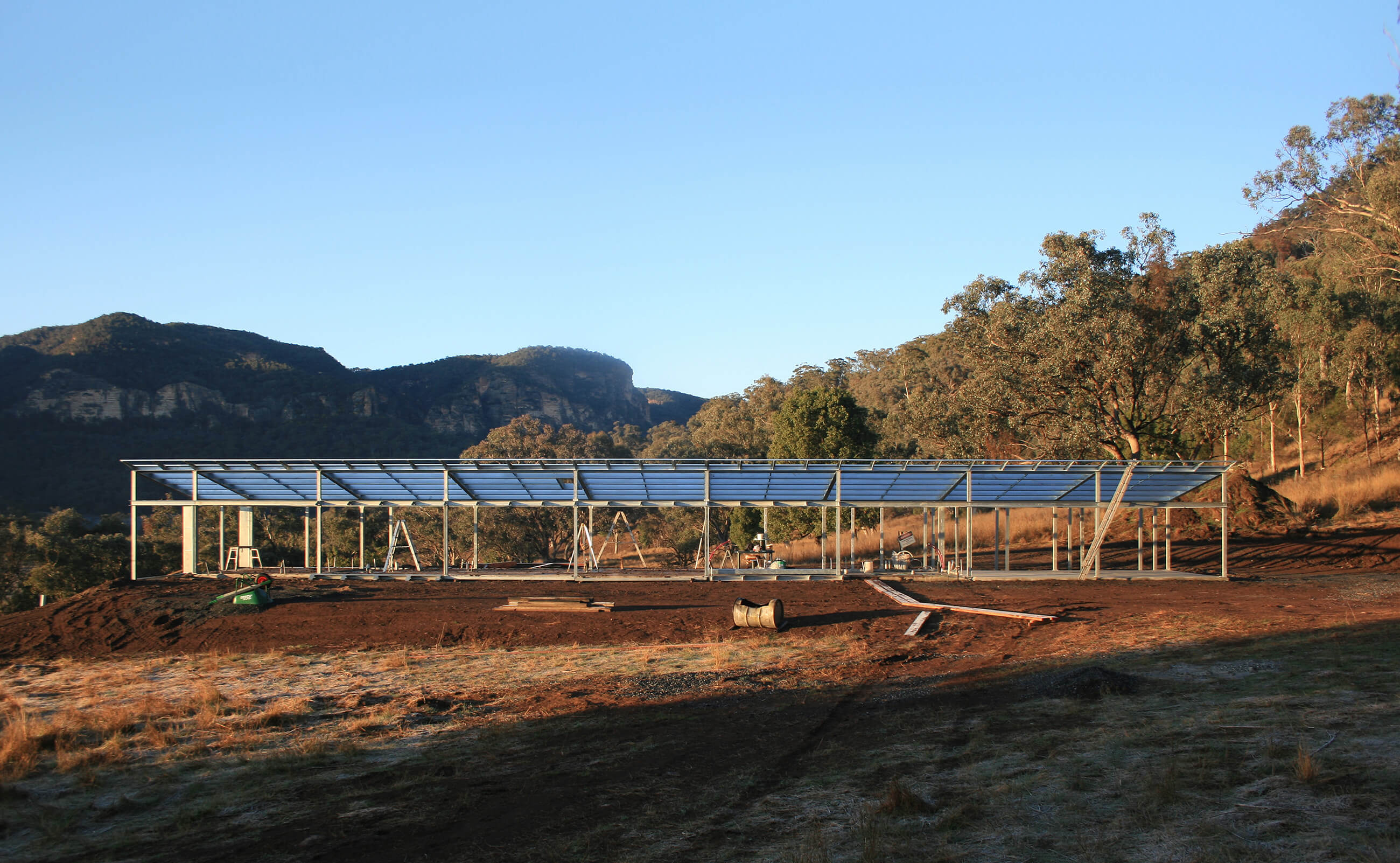
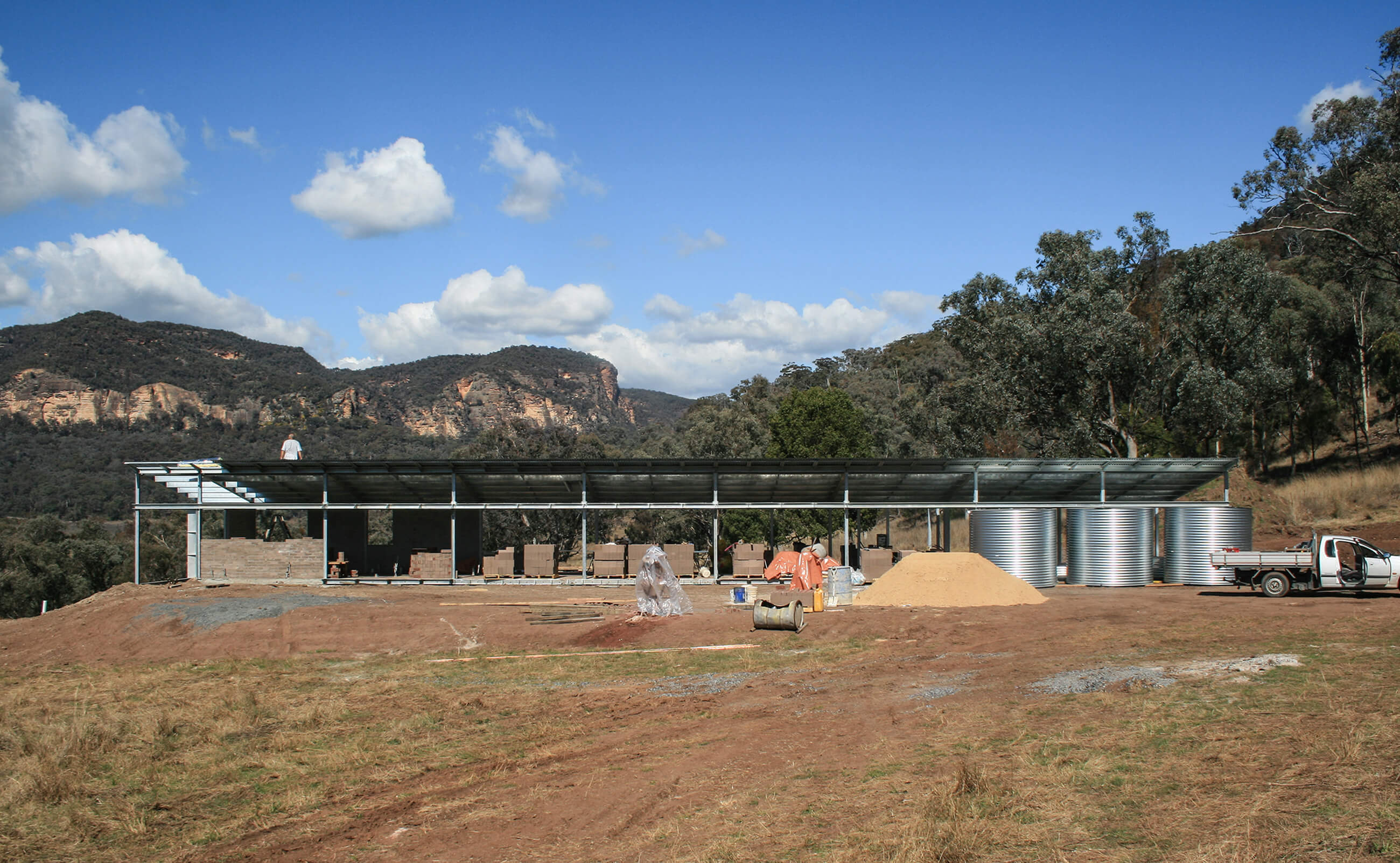
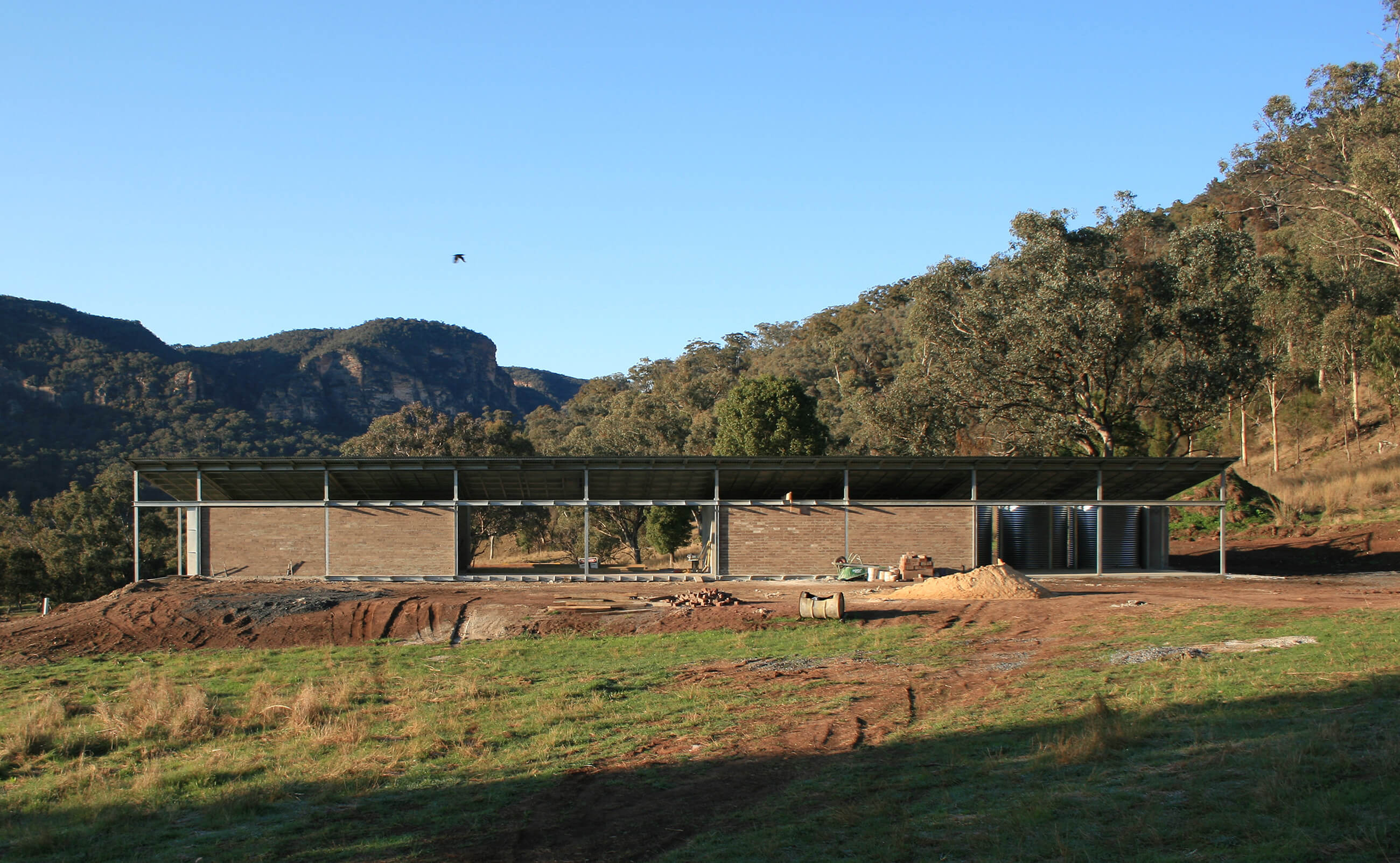
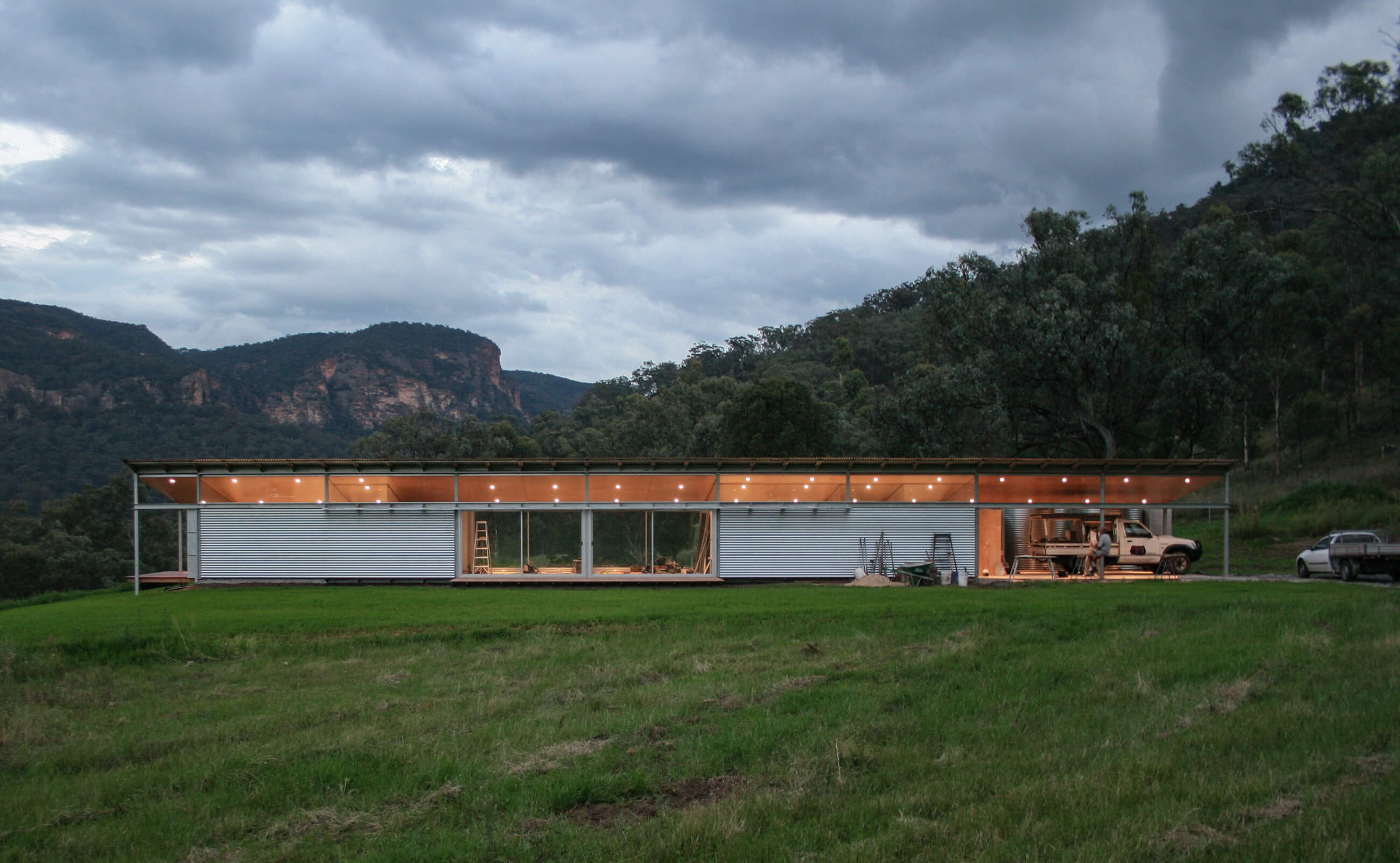
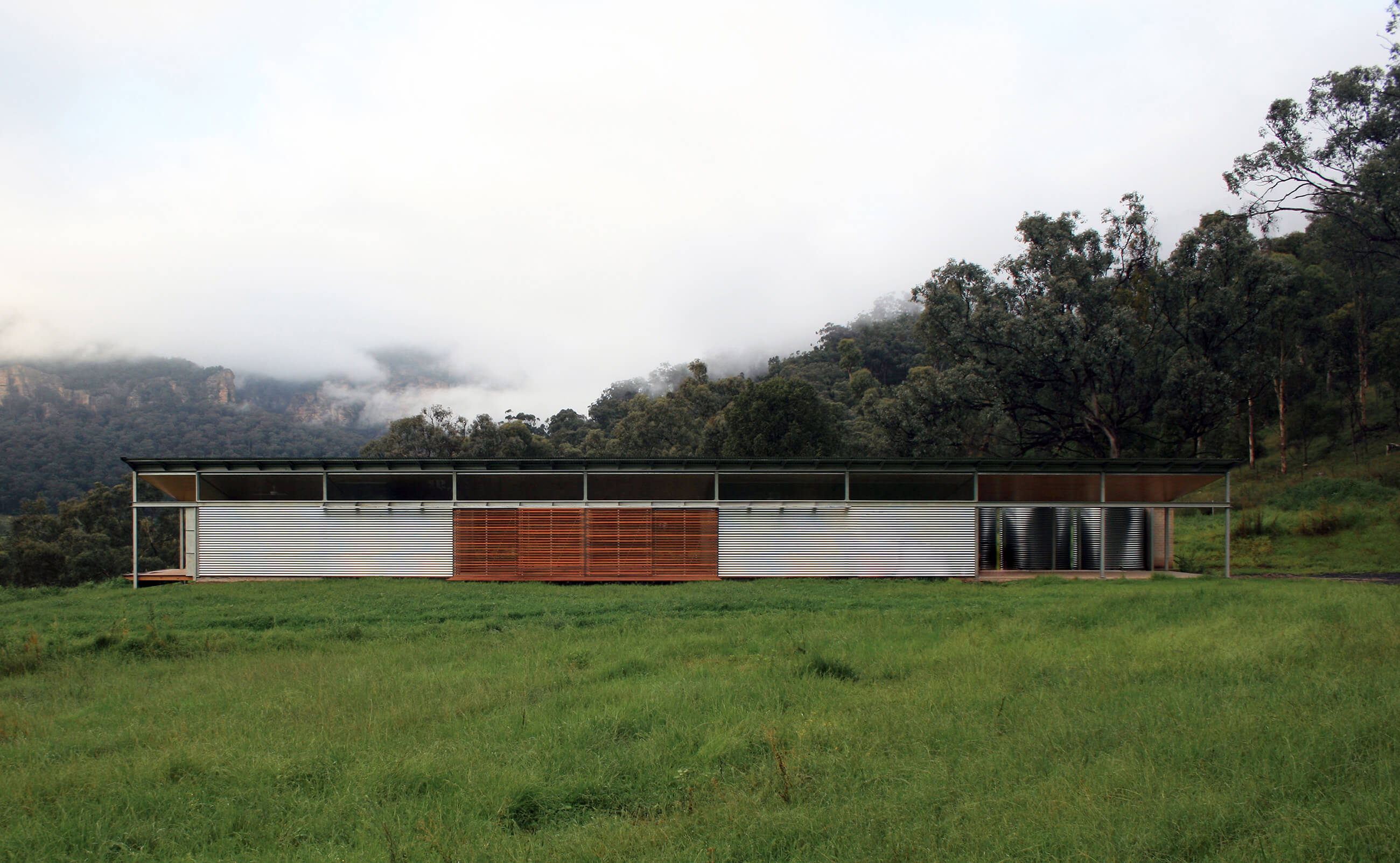
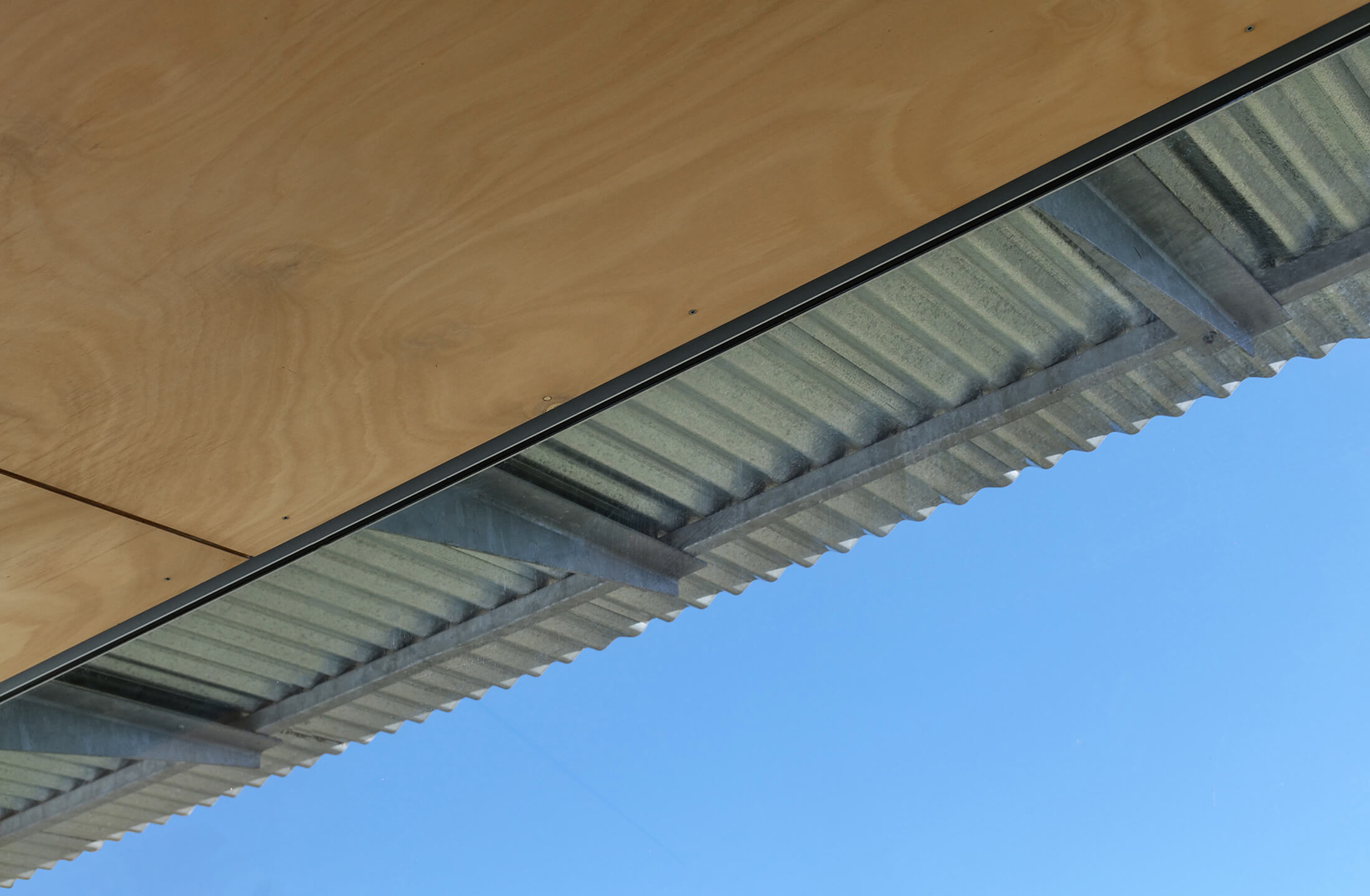
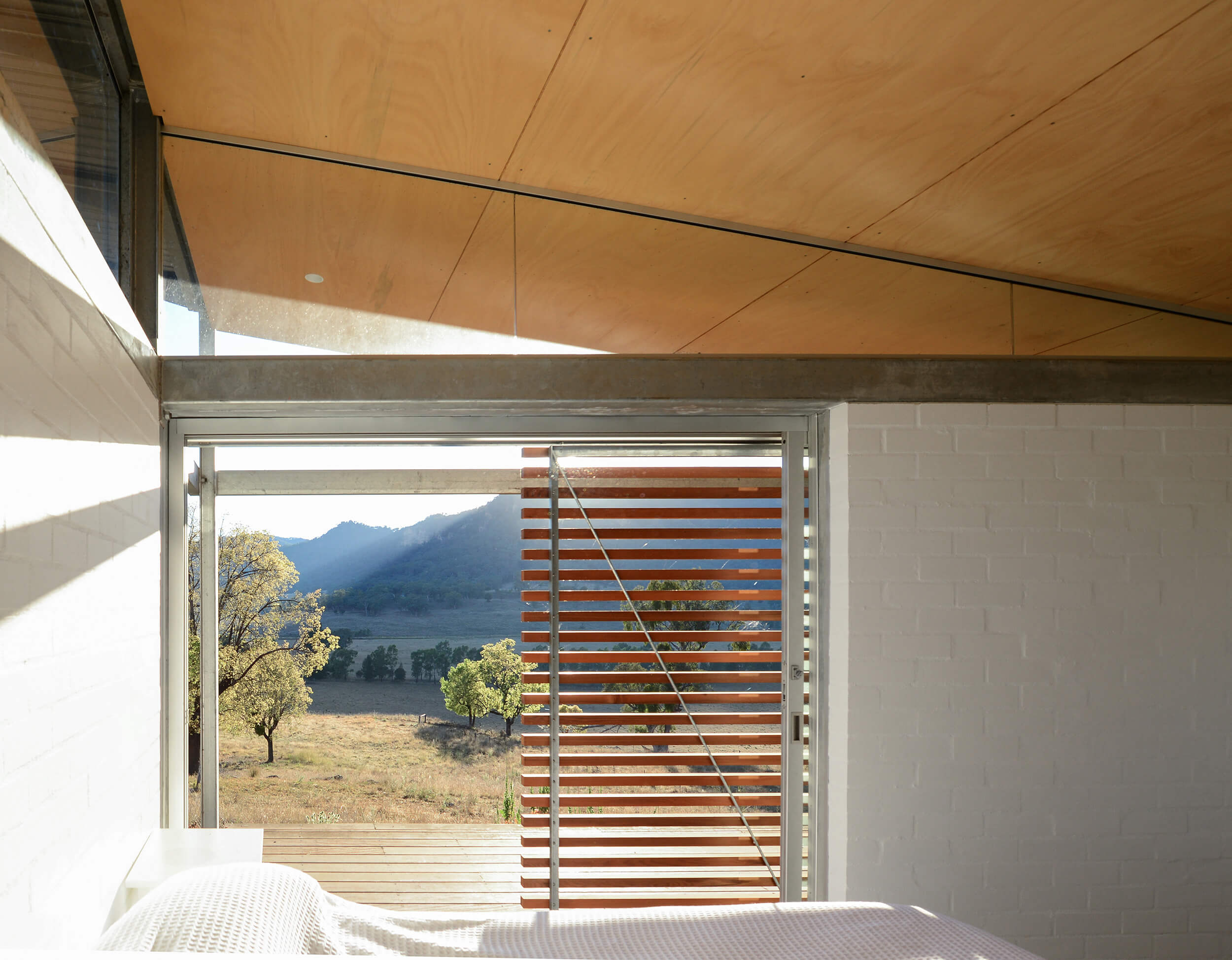
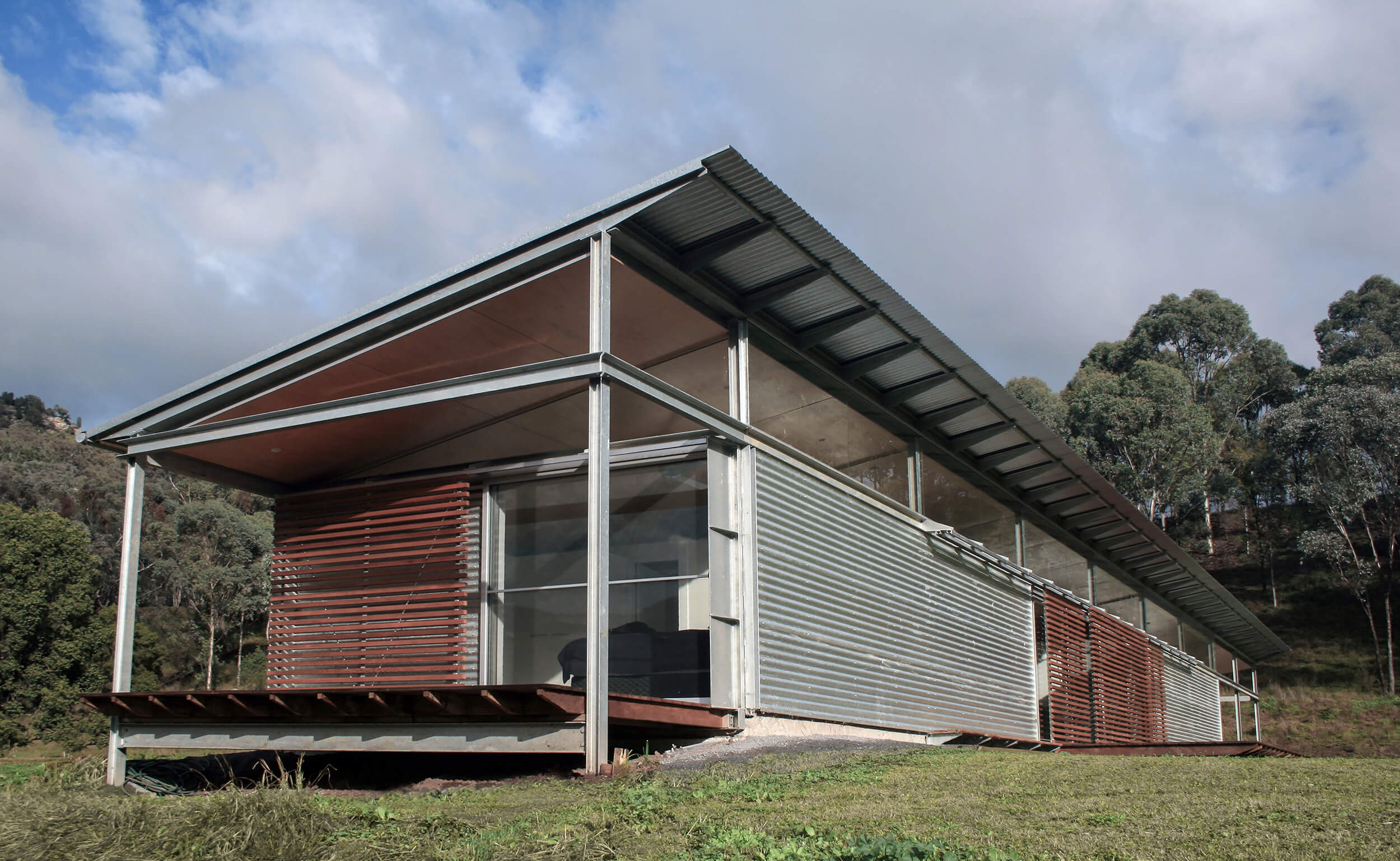
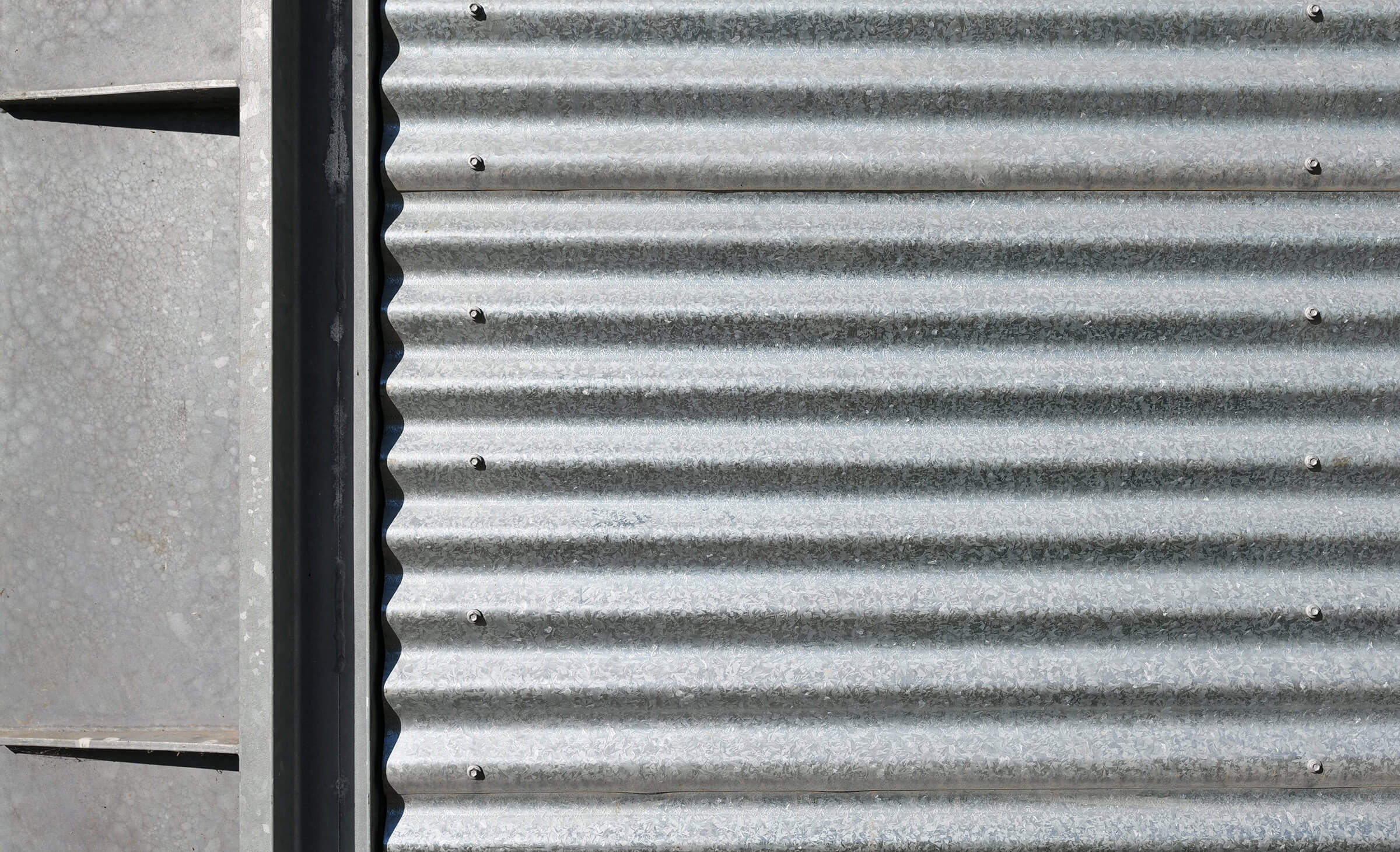
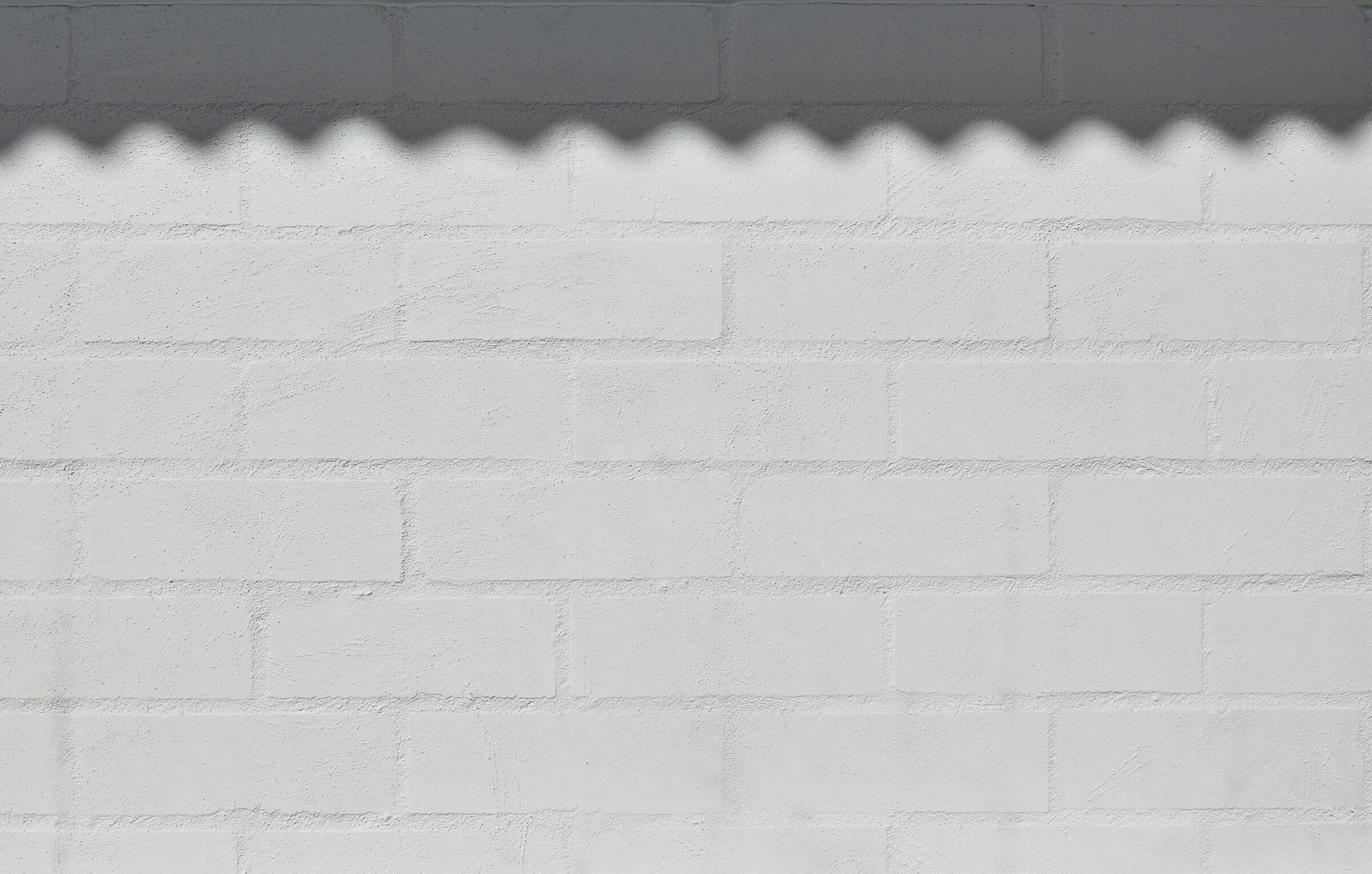
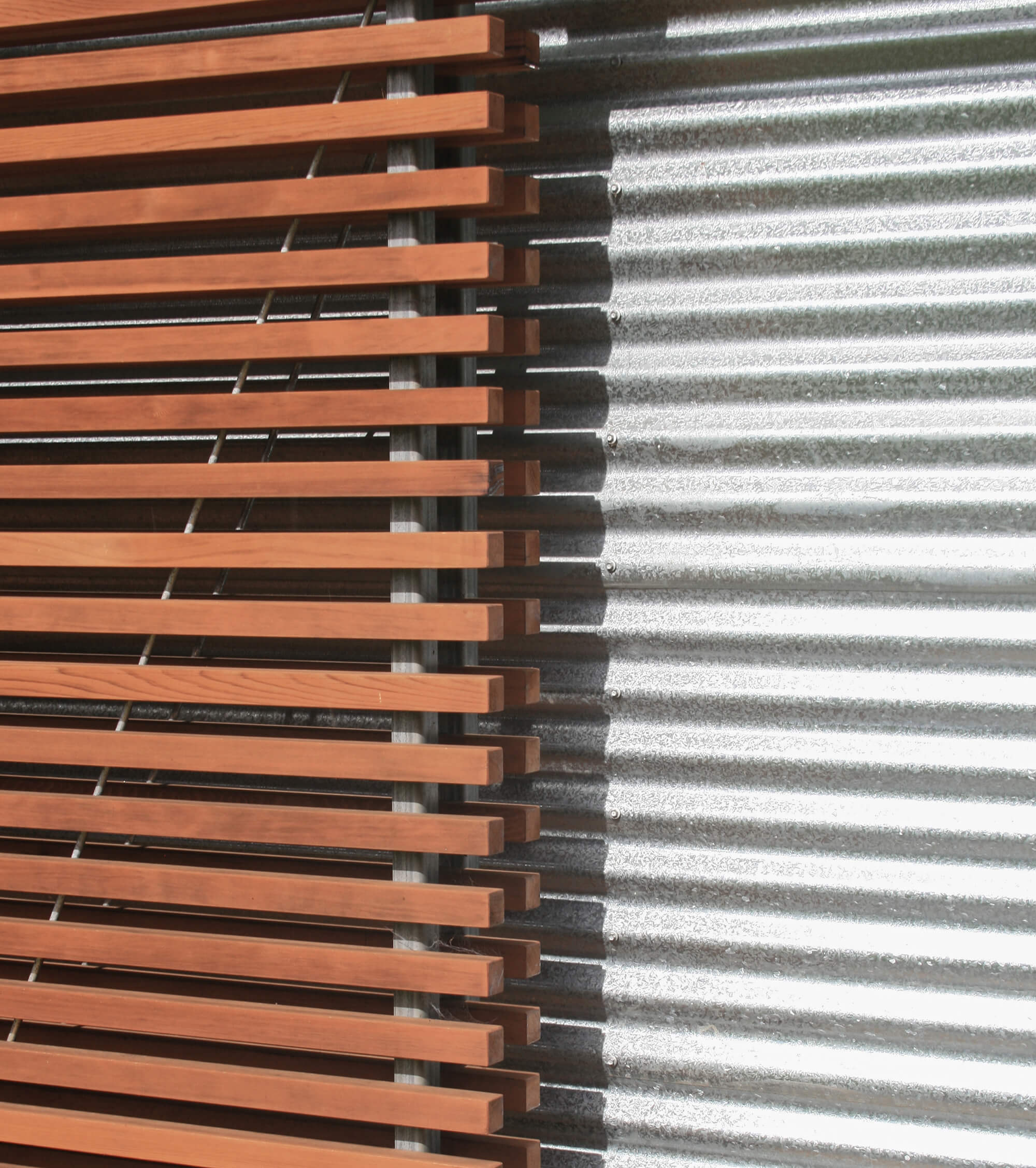
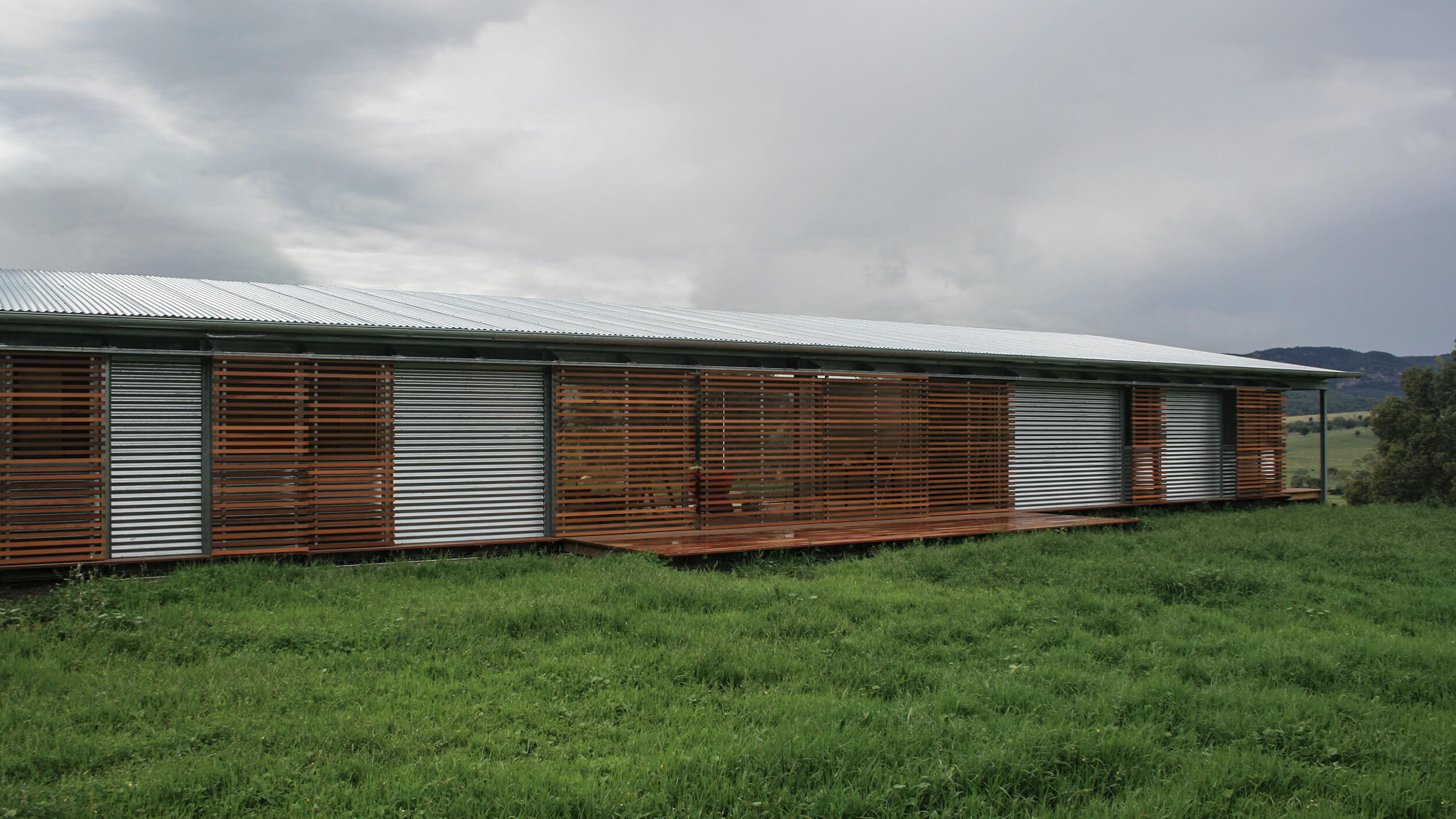
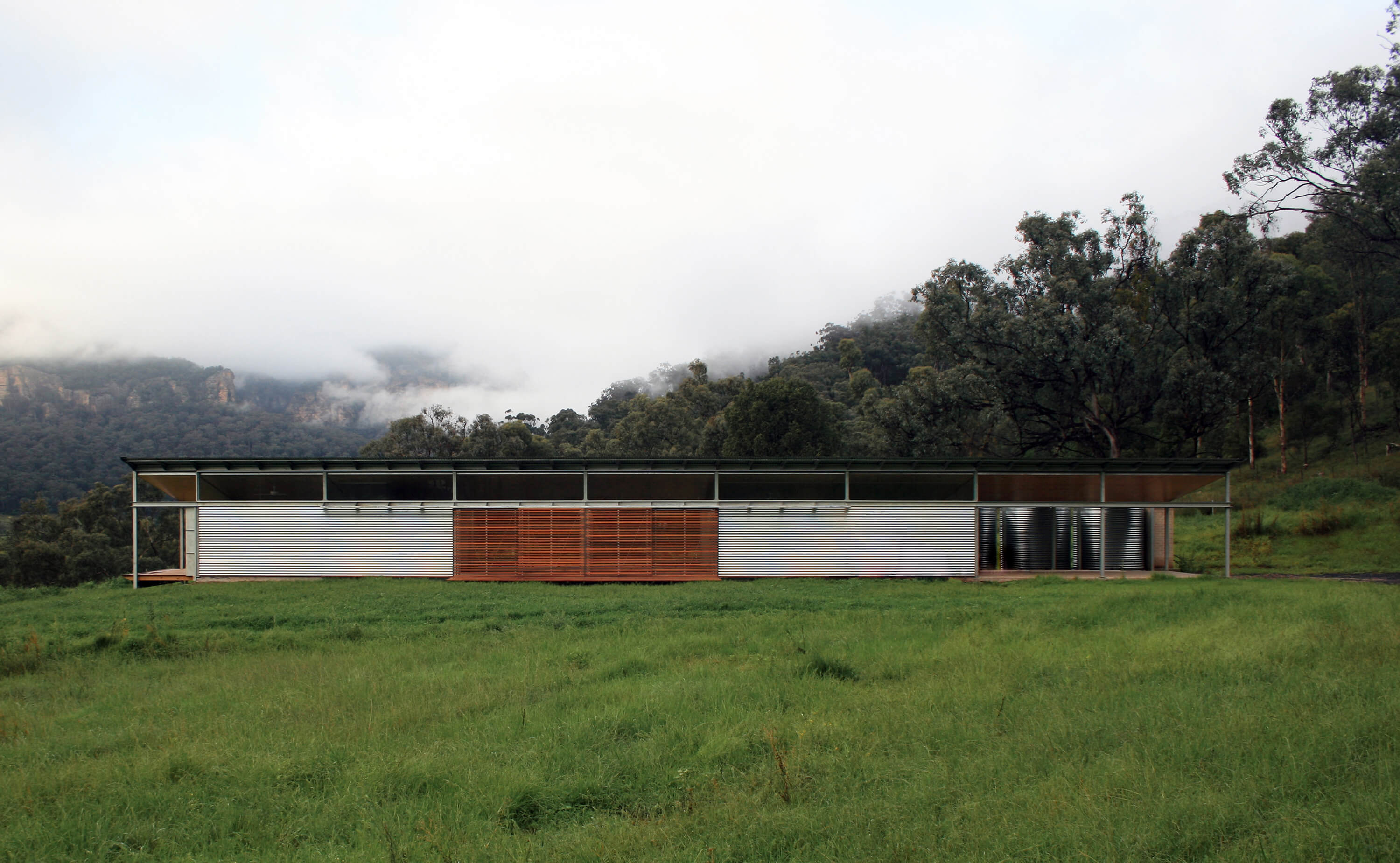
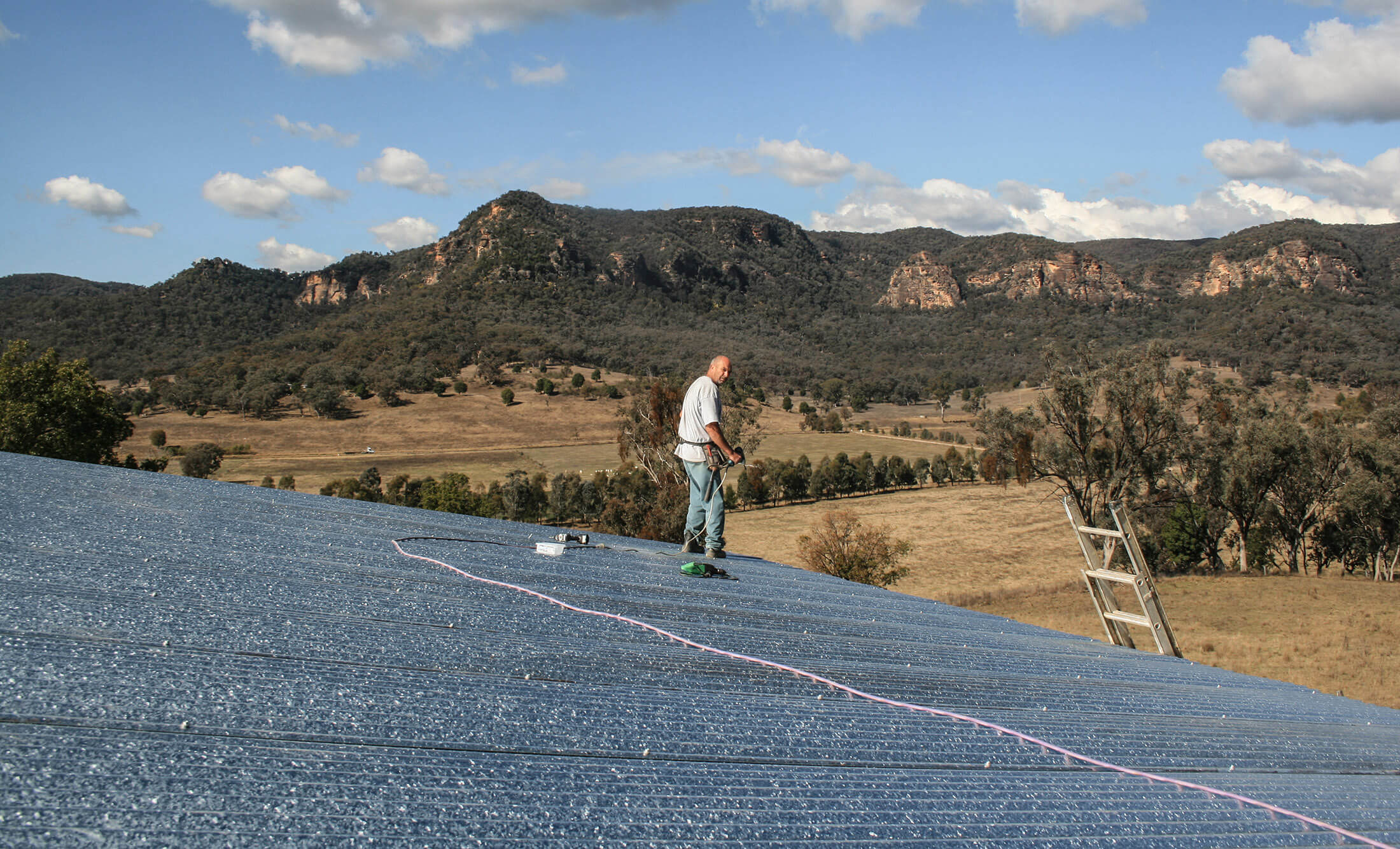
Ginghi House
Ginghi House is located on a farm in the Bylong Valley NSW. Beyond the paddocks to the South-East, a sandstone escarpment glows red at sunset. The client’s brief was for a weekender with two bedrooms, two bathrooms and an open plan kitchen, dining & living room. The long plan, linear form and material palette draws from the agricultural vernacular of sheds, barns, silos and tanks.
The roof is a floating plane of plywood and corrugated steel. The galvanised steel frame and bagged brickwork are expressed internally. Sliding timber batten screens provide operable shade and dappled light.
Reverse brick veneer walls act as a heat battery absorbing daytime winter sun, and slowly releasing warmth at night. A north facing eave gives shade in summer. Sliding doors let cool breezes through on hot days. In winter, temperatures can drop below zero degrees, so a wood-fired hydronic heating system circulates warm water through the concrete floors.
Materials were selected for ease of transport, maintenance, and assembly by a small construction team. The prefabricated steel structure was bolted together, erected in three days by just four people.
We lived on the farm while we built the house, over 18 stages across 12 months.
Country: Mudgee & Dabee, Wiradjuri
Builder: Bob Searle
Architect & Leading Hand: Jack Hawkins
Joinery: Trubuilt
Photography: Kate Hawkins
Completed: 2012